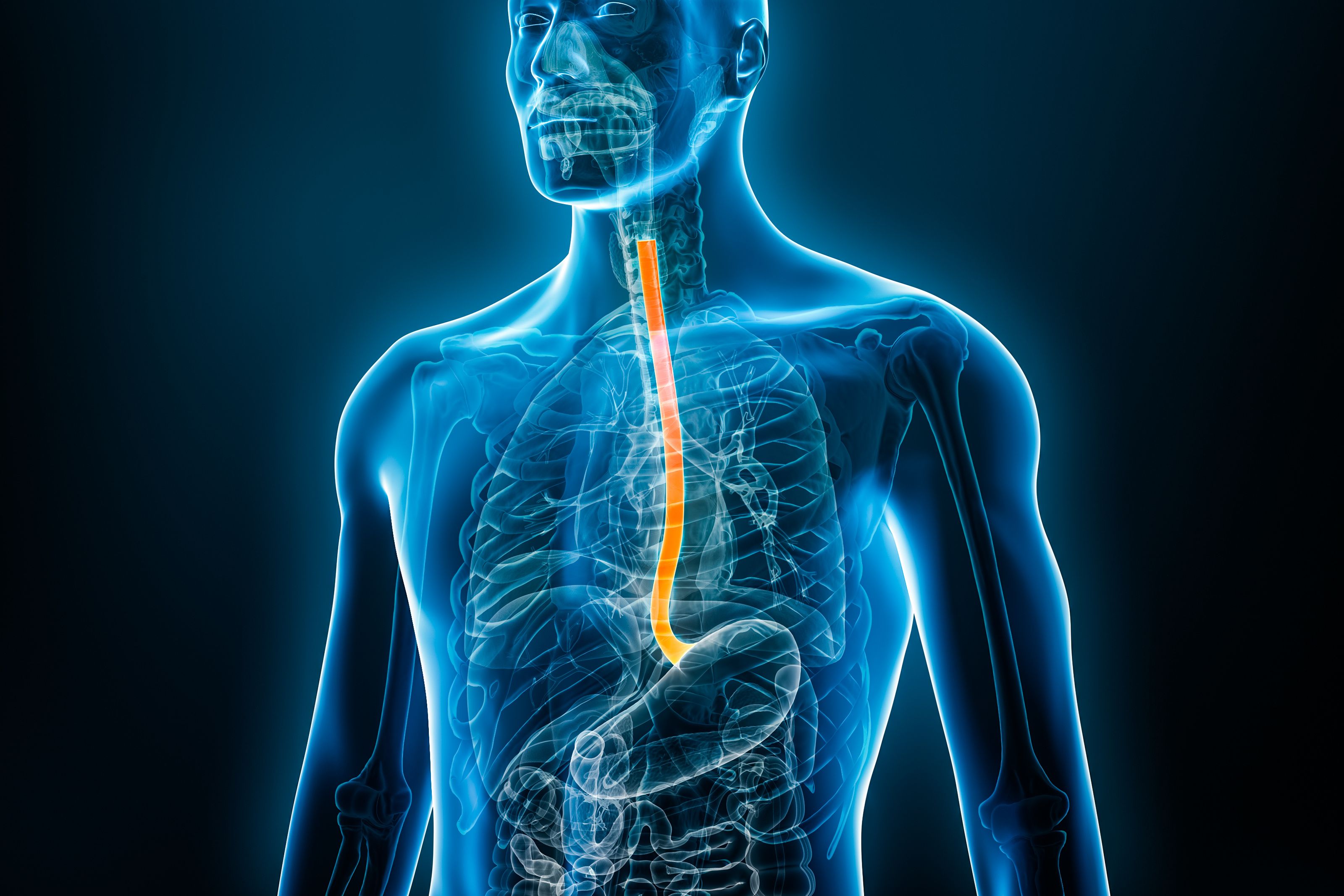News
Article
Phase 3 Trial Highlights Efficacy of Dupilumab for EoE in Children Aged 1 to 11
Author(s):
Dupilumab may improve disease severity in children with eosinophilic esophagitis (EoE).
Children aged 1 to 11 years with eosinophilic esophagitis (EoE) receiving weight-tiered higher dose dupilumab (Dupixent; Sanofi) demonstrated significant improvements in symptoms compared with placebo in a phase 3 trial (NCT04394351). The results indicated subcutaneous administration of dupilumab weekly improved histological outcomes and alleviated symptoms, emphasizing its potential to change the standard of care for patients with EoE.1
EoE is chronic, progressive, type 2 inflammatory disease resulting in inflammation of the esophagus, which interrupts its ability to contract properly and causes development of abscesses. The disease has a significant impact on quality of life, impairing an individual’s ability to safely swallow. Additional symptoms can often include chest or abdominal pain, heart burn, vomiting, and stunted growth and poor weight gain in children. Children with atopic dermatitis (AD), asthma, or other allergy disorders have an increased risk of developing EoE.2
Image credit: © Matthieu | stock.adobe.com

Treatment for EoE involves close collaboration with specialists, such as allergists and gastroenterologists, to identify substances or foods, such as eggs, dairy, wheat, fish, tree nuts, peanuts, and soy, that may trigger an inflammatory episode. In some cases, it can take days or weeks for an inflammatory episode to occur after exposure to an allergen. There is no medication that can cure EoE, but there are various available therapies to reduce swelling of the esophagus, such as corticosteroids and proton pump inhibitors. However, positive results from the phase 3 trial investigating dupilumab show promise in offering patients an alternative treatment option with sustained response.2,3
Dupilumab is a fully human monoclonal antibody approved for treatment of multiple inflammatory disorders, such as AD and asthma. It works by blocking the shared receptor for interleukin-4 and interleukin-6, which are the central drivers of type 2 inflammation. In the phase 3 randomized, double-blind, placebo-controlled study, evaluating the efficacy and safety of dupilumab, the treatment demonstrated capabilities in improving disease severity with expected safety results.3
The trial was composed of 3 parts; part A enrolled 102 patients to receive dupilumab at a weight-tiered dose or lower dose regimen compared with placebo at 16 weeks, and part B was a 36-week extended treatment period where patients who received the placebo in part A transitioned to weight-tiered or low dose dupilumab. Part C is ongoing and will continue evaluating eligible patients from part B. The primary end point was histological remission at 16 weeks with secondary end points including assessments of endoscopic and histopathologic measures of disease severity.3,4
In part A, the histological remission occurred in 60% of patients receiving weekly dupilumab compared with 5% of patients receiving the placebo (difference, 55 percentage points; 95% confidence interval [CI], 40 to 71; P<.001). In part B, histological remission occurred in 59% of patients treated with weekly dupilumab and 60% of patients with dupilumab every 2 weeks. Additionally, dupilumab treatment also led to improvement in body weight for age percentile by week 16 and was sustained for 1 year. The safety results were consistent with the known profile of dupilumab, and common observed adverse effects were nausea, headache, and pain at the injection site (≥10%).3
“These children commonly experience feeding difficulties, food refusal and failure to thrive during a critical time of their growth and development,” Mirna Chehade, MD, MPH, professor of pediatrics and medicine at the Icahn School of Medicine at Mount Sinai andMount Sinai Kravis Children's Hospital in New York, New York, and principal study investigator, said in a press release. “These data showed weight-tiered higher dose dupilumab significantly improved key eosinophilic esophagitis histologic, endoscopic, and cellular measures in children as young as 1 year old with sustained results for up to one year.”4
The findings emphasize the crucial need for improved treatment for children with EoE to enhance their quality-of-life and reduce the severity of the disease. The promising data from the study were the basis for the FDA’s priority review and approval of dupilumab in children aged 1 to 11 with EoE weighing at least 15kg in May of 2022. As the trial continues, investigators will evaluate eligible patients from part B with a 108-week open-label extension period of dupilumab.4
REFERENCES
1. Study to investigate the efficacy and safety of dupilumab in pediatric patients with active eosinophilic esophagitis (EoE) (EoE KIDS). Clinicaltrials.gov. Updated June 5, 2023. Accessed July 11, 2024. https://www.clinicaltrials.gov/study/NCT04394351
2. Eosinophilic Esophagitis. John Hopkins Medicine. Accessed July 11, 2024. https://www.hopkinsmedicine.org/health/conditions-and-diseases/eosinophilic-esophagitis#:~:text=Eosinophilic%20esophagitis%20is%20an%20allergic,in%20reaction%20to%20an%20allergen.
3. Dellon E, Rothenberg M, Collins M, et al. Dupilumab in adults and adolescents with eosinophilic esophagitis. N Engl J Med. December 21, 2022. doi: 10.1056/NEJMoa220598
4. Press Release: Dupixent positive phase 3 data in children one to 11 years of age with eosinophilic esophagitis published in NEJM. Sanofi. June 26, 2024. Accessed July 11, 2024. https://www.sanofi.com/en/media-room/press-releases/2024/2024-06-26-21-30-00-2904847
Newsletter
Stay informed on drug updates, treatment guidelines, and pharmacy practice trends—subscribe to Pharmacy Times for weekly clinical insights.





